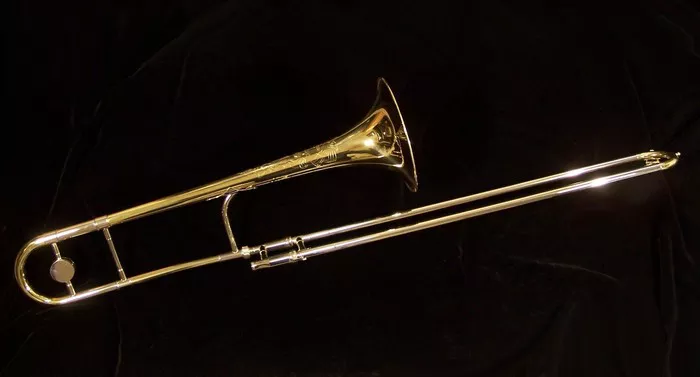The trombone is a brass instrument that has been an integral part of various musical genres for centuries. Its distinctive sliding mechanism sets it apart from other brass instruments, allowing for a wide range of pitches and expressive capabilities. Understanding how the trombone produces sound is essential for players to master this versatile instrument effectively.
Anatomy of the Trombone
The trombone consists of several key components that work together to produce sound. The main parts include the mouthpiece, slide, bell, and tubing. The mouthpiece is where the player buzzes their lips to create vibrations, which are then amplified through the instrument’s tubing. The slide allows the player to change the length of the tubing, altering the pitch of the sound produced. Finally, the bell serves to amplify and project the sound outward.
How the Trombone Makes Sound
The process of producing sound on the trombone begins with the player’s lips vibrating against the mouthpiece. This creates a buzzing sound, which is then amplified as it travels through the instrument’s tubing. By adjusting the length of the tubing using the slide, the player can change the pitch of the sound. The unique sliding mechanism of the trombone allows for smooth transitions between notes and expressive glissandi.
1. The Role of Air
In addition to buzzing the lips, the player must also control the flow of air into the instrument. Proper breath support is essential for producing a clear and resonant sound on the trombone. Players must learn to regulate their airflow to maintain consistency across different registers and dynamic levels. Developing strong diaphragmatic support and breath control is crucial for achieving a rich and full tone.
2. Embracing Embouchure
The embouchure refers to the position and shape of the player’s lips, mouth, and facial muscles when playing the trombone. A proper embouchure is essential for producing a clear and focused sound. Players must learn to balance the tension in their lips to achieve optimal resonance and flexibility. Experimenting with different embouchure setups can help players find the most comfortable and efficient technique for their individual playing style.
4. Mastering the Slide
One of the most distinctive features of the trombone is its slide mechanism, which allows for seamless glissandi and precise pitch control. Proper slide technique is essential for navigating the instrument’s range smoothly and accurately. Players must develop a keen sense of proprioception to locate the correct positions of each slide position without visual aid. Regular practice drills focusing on slide accuracy and coordination can help players master this fundamental aspect of trombone playing.
Trombone Articulation
Articulation refers to how notes are started and stopped on the trombone. Different articulation techniques, such as tonguing and slurring, can significantly impact the clarity and character of the sound produced. Players must learn to articulate notes cleanly and precisely to convey musical phrasing and expression effectively. Practicing articulation exercises, such as scales and etudes, can help develop dexterity and control in this aspect of trombone playing.
1. Developing Tone Quality
Achieving a beautiful tone is the ultimate goal for trombone players. Tone quality is influenced by various factors, including embouchure, airflow, and articulation. Experimenting with different mouthpiece sizes and materials can also affect the timbre of the sound produced. Regular long-tone exercises focusing on sustaining a steady and resonant sound can help players develop a rich and nuanced tone quality on the trombone.
2. Expressive Techniques
Beyond simply producing notes, trombone players must also master a range of expressive techniques to convey emotion and musicality. Techniques such as vibrato, dynamics, and phrasing can add depth and character to a player’s performance. Learning to manipulate these elements effectively requires careful listening and experimentation. Studying recordings of master trombonists and exploring a variety of musical styles can provide valuable insight into the art of musical expression on the trombone.
Practice Strategies
Effective practice is essential for mastering the trombone. Developing a structured practice routine that focuses on fundamental skills such as tone production, technique, and musicality is key to continual improvement. Setting specific goals for each practice session and gradually increasing the difficulty of exercises can help keep players motivated and engaged. Additionally, seeking feedback from teachers and peers can provide valuable insight and guidance for refining technique and musicianship.
Conclusion
The trombone is a versatile and expressive instrument that offers endless possibilities for musical creativity. By understanding the mechanics of how the trombone produces sound and mastering essential playing techniques, players can unlock the instrument’s full potential. With dedication, practice, and a commitment to musical expression, aspiring trombonists can embark on a rewarding journey of musical discovery and growth.


